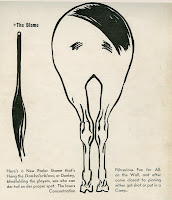
I have a dozen or so european magazines in my collection and those almost always contain important americana. The earliest printed image of the "president's house" was published in a British ladie's magazine in 1814, reporting the success of their troops in destroying it. All remnants of the fire were removed when the house was gutted and rebuilt during the Truman administration. An 1833 American image also show, when a good portion of present day Washington was still a mosquito infested swamp.

L'Enfant's first map of Washington, engraved by Thackara and Vallance, was originally published in Columbian Magazine and Universal Asylum in October 1792. It is usually found in a folded state extracted from the original magazine. Here is a wonderful image of the one I found in a print shop in Washington in the original state with deckled edges. The watermark of the paper is identical to those taken from magazines. I had an I eye on it for some time and bought it for $5000 the day after an extracted magazine copy sold at auction in New York for $12,000.












































